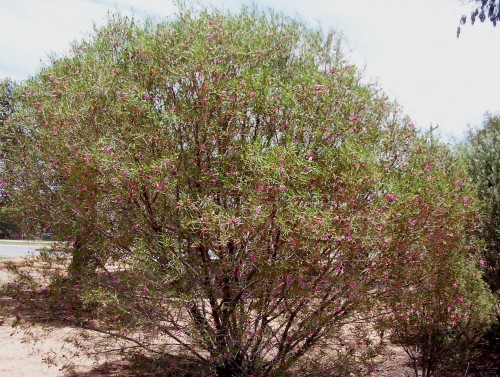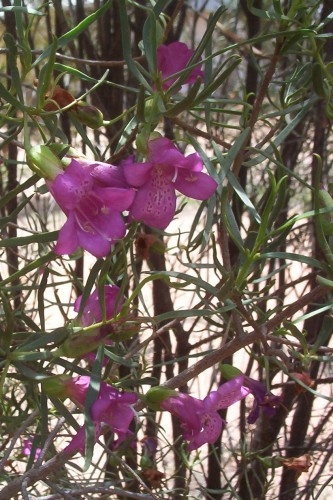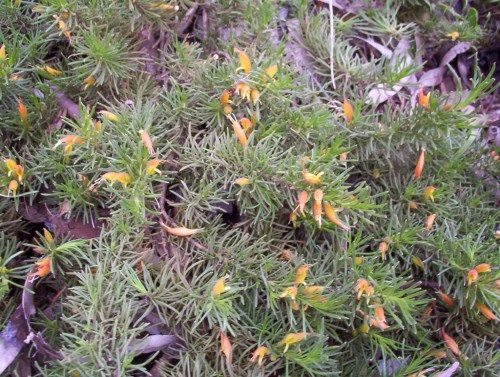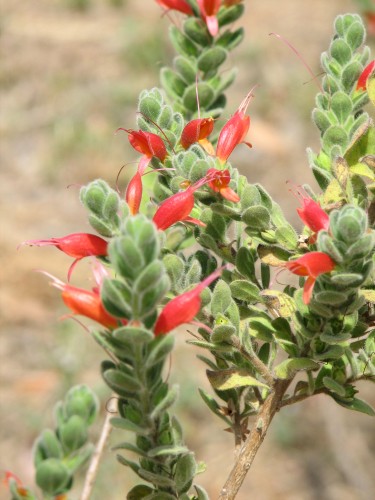Salt Tolerant Plants
An email came today asking for assistance with species that would grow in bore water with high salt readings. This is a difficulty for many in the mallee areas of South Australia and no doubt other parts of the country too. In many cases it becomes trial and error to see what would grow in such a situation, but some lists have been compiled by members of the Australian Plants Society which give a good starting point.
There are some things to consider.
- There is a need to ensure that watering is deep.
- Choose plants from areas which have the same rainfall situation ie same amount of rain, at the same time of year. This is to ensure that plants will get minimum exposure to the high salinity.
- If possible place highly desirable plants near an alternative water source, eg rain water, to get them well established without the saline water.
List of Australian Native Plants with salt tolerance.
1st Line Coast
Ground Covers, Climbers and Low Spreading Plants
Correa decumbens
Eremophila glabra prostrate cerise form
Eremopohila glabra prostrate red form
Grevillea ‘Seaspray’
Isolepis nodosa
Leuocophyta brownii
Rhagodia spinescens
Scaevola crassifolia
Templetonia retusa prostrate form
Shrubs 1-2m
Atriplex cinerea
Callistemon rugulosus
Eremophila calorhabdos
Eremophila glabra (Rottnest Island)
Hakea cycloptera
Olearia axillaries
Templetonia retusa
Westringia fruticosa
Shrubs over 2m.
Atriplex nummularia
Callistemon teretifolius
Hakea drupacea
Melaleuca nesophila
More lists will be available soon.
Eremophilas (Emu Bush) in Medicine
The following is an extract from an article on the ABC Website concerning the research that has been going on with Eremophilas. These are hardy plants, with attractive flowers which are loved by Honeyeaters.
More on Eremophilas can be seen here. Also see the category Eremophilas.
Australian native plants are being used to develop new antibacterial agents for coating biomedical implants (Source: Hans Griesser)
An extract from a flowering desert plant, used as traditional medicine by Indigenous Australians, could one day be used to coat hip transplants and other biomedical devices, say researchers.
Professor Hans Griesser and colleagues are presenting their work this week at a biomaterials conference at the University of New South Wales in Sydney.
“We can learn so much from nature and traditional knowledge,” says Griesser, a materials scientist from the University of South Australia.
He says Aboriginal people use leaves of Eremophila plants, which grow in Australia’s desert areas, to make ointments for skin abrasions and gargles for throat infections.
More of the article can be read here.
Eremophila oppositifolia x
We had lunch at Murrayville in Western Victoria at a rest area and this Eremophila formed a screen on one side of the picnic table. I am not really sure whether it is a hybrid, but it has the look of Eremophila oppositifolia, but then again, not quite. So I am assuming it is a hybrid, as many Eremophilas do form natural hybrids in the wild and they are being propagated. This plant has pink flowers with spots in the throat. The pure Eremophila oppositifolia has white, cream, pink or purple flowers, all of which are very pretty plants.
In most cases the plants I have seen are around two metres tall. These possible hybrids were about two and a half metres tall and nearly the same width.
Further along the road is a planting that I admired and had a number of photos of from a couple of years ago. I was really disappointed to see so many of the plants dead. This area has been in drought for a while. Some Eremophilas need a reasonable rainfall, probably deep drinks, infrequently, rather than small amounts often.
Eremophila subteretifolia
When I first began growing Eremophilas (Emu Bushes) I tried those that were considered to be hardy and available through plant sales put on by the Australian Plants Society. 20 years ago there were not many species in the nursery trade.
Eremophila subteretifolia is ground cover plant covering about 3 metres and with the occasional branch rising to about 25 cm. It is mostly quite prostrate and has a cascading effect on embankments. It is not a vigorous plant so is easily contained to an area. This is another of those ground covering plants which could be used as a substitute lawn where it would not be walked over.
This species is very drought tolerant and frost hardy.
The plant has orange tubular flowers which are enjoyed by Honeyeaters, particularly Red Wattle Birds and New Holland Honeyeaters.
Eremophila splendens
I find Eremophila splendens to be a spectacular plant when in flower. The bright red flowers glow against the foliage which is quite hairy similar to some Eremophila glabra forms. This plant needs very good drainage. It is either a sprawling low plant or can be quite upright.
Eremophila splendens is restricted to Shark Bay about midway along the Western coast of Western Australia. It grows on the heathlands with Thryptomene and Melaleuca.
Last winter I lost some small plants to frost but I want to try again in a more sheltered location where the canopy of mallees may protect them. This is a plant that needs to be pruned aftyer flowering to encourage new and dense growth. Mature plants get very leggy and have sparse foliage without the pruning.



